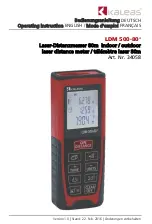
Concepts and features
R&S
®
ZNA
93
User Manual 1178.6462.02 ─ 20
ALC IF
band-
width
IF filter (analog): normal
IF filter (analog): wideband, narrowband
K
r
(dB)
T
i
(ms)
T
control
(ms)
K
r
(dB)
T
i
(ms)
T
control
(ms)
10 kHz
0.66
0.042
0.35
0.3
0.025
0.215
100 kHz
0.11
0.0014
0.04
0.315
0.003
0.031
1 MHz
–
–
–
0.177
.001475
0.04
For some test scenarios, an adjustment of the ALC parameters (loop tuning) can
improve the stability and speed of the ALC.
ALC pre-measurement
Since firmware version 2.30 the ALC measurements are performed separately, before
the user-requested measurements with their corresponding source settings. The ALC
measurements are done one after the other, until all sources have a precise level.
The new pre-measurement allows you to use ALC also for mixer, intermodulation, and
group delay measurements. It also induces a more predictable behavior for pulsed
measurements and higher precision for phase coherent source signals.
ALC optimization
To reduce the overall measurement time, the ALC pre-measurements can also be per-
formed in a speed-optimized way. By default this optimization is done if a single source
is using ALC, but
not
if pulsed or phase coherent source signals are generated.
ALC deembedding
This feature allows the ALC to consider the configured
. The target power then refers to the DUT port instead of the calibra-
tion plane.
ALC with mmWave converters
Loop tuning is particularly beneficial for frequency converters R&S
ZC500,
R&S
ZC750, and R&S
ZC1100.
To use ALC with mm-wave converters, suitable
is required. The leveling
data must use a step size of 1
dB, which can be enforced with the
ting.
4.1.6
Data flow
The analyzer processes the raw measurement data in a sequence of stages to obtain
the displayed trace. The following subsections give an overview.
4.1.6.1
Channel data flow
The diagram below illustrates the data processing stages for the entire channel. All
stages are configurable.
Basic concepts
















































